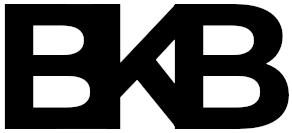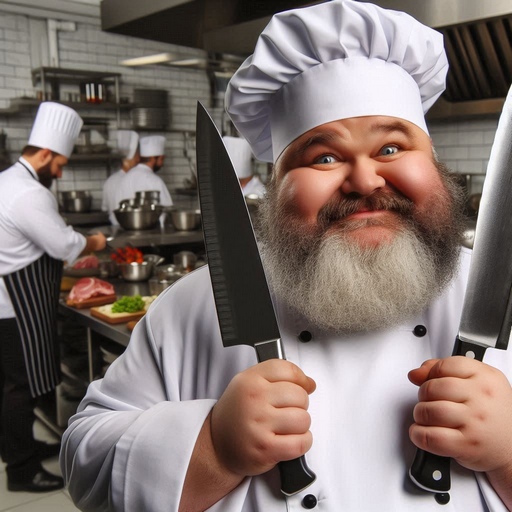French and German!
Both evolved in the 18th and 19th centuries, shaped by distinct culinary traditions — but they share a common purpose: versatility in the kitchen.
The French chef's knife
also known as the "couteau de chef"and as the Sabatier style, is deeply rooted in French culinary traditions. It's designed for precise and delicate tasks such as slicing vegetables, herbs, and fish. The French knife emphasises finesse, control and the ability to make intricate cuts.
The German chef's knife
also known as the "kochmesser"and as the Solingen style, is renowned for its durability and versatility. It is designed for a wide range of tasks like chopping, slicing and mincing. German chef knives excel in handling heavier and tougher ingredients such as meat and hard root vegetables.
Both are equally popular styles with most professional chefs owning each. Here are the main differences -
Blade Shape:
One of the most noticeable differences is in the shape of the blade. A French chef knife typically has a longer, curved blade that gradually tapers to a point. The curved profile allows for a rocking motion while chopping, making it suitable for tasks like mincing herbs and vegetables. On the other hand, a German chef knife usually has a more pronounced, wide blade with a straighter edge. This straighter edge is well-suited for a chopping motion making it ideal for tasks like slicing through thick-skinned vegetables and meats.
Blade Thickness:
German chef knives tend to have thicker blades compared to French chef knives. The extra thickness provides more weight and durability, making them suitable for heavy-duty tasks like cutting through bones or tough cuts of meat. French chef knives, with their thinner blades, offer more precision and agility, making them ideal for tasks that require finesse such as slicing or precision cuts.
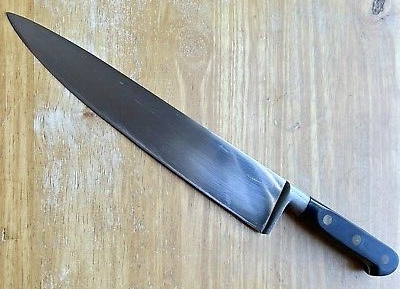
French style
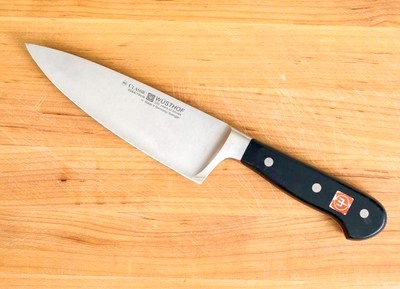
German style
Weight and Balance:
German chef knives are typically heavier and have a more balanced weight distribution. This weight is advantageous for tasks that require more force or when stability is needed. The additional weight can help with efficient chopping and reduce fatigue during prolonged use. French chef knives on the other hand, are often lighter and more nimble which can provide better control and agility for delicate tasks.
Handle Design:
The handle design can also differ between the two styles. German chef knives usually have a full tang, meaning the blade extends through the handle providing additional strength and balance. The handle is often more robust and ergonomic allowing for a secure and comfortable grip. French chef knives may have a full tang or a partial tang and the handle is often slimmer and more streamlined, offering the precision and control mentioned.Both French and German chef knives have their merits and excel in different cooking styles. French chef knives are favored for their agility, accuracy and versatility while German chef knives are known for their durability, robustness and ability to handle heavy-duty tasks.
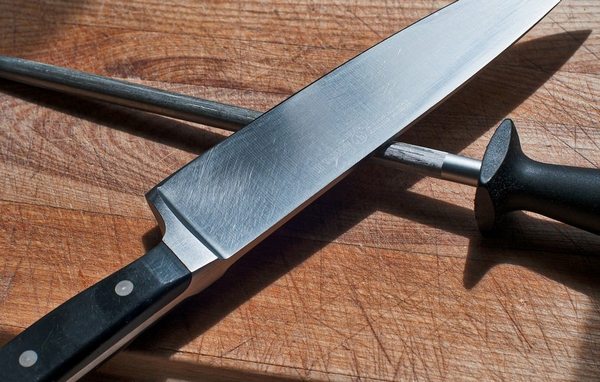
Ultimately, the choice between French or German depends on your personal preference, the type of cooking you do and the specific tasks you commonly perform in the kitchen. If you have the chance, try both styles for comparison and see which style feels more comfortable and suits your food prep needs. If you take your cooking seriously, you'll probably want to own both!
